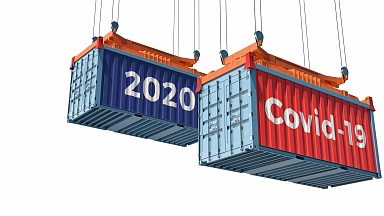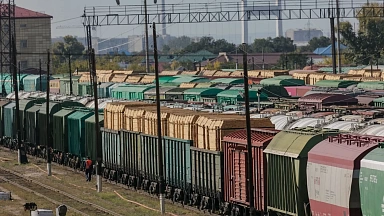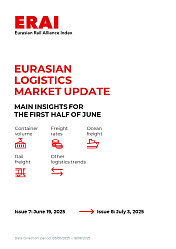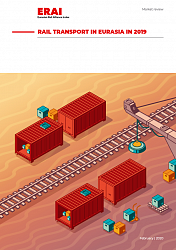Factors dealing with international politics and technology have changed the logistics industry. Against this backdrop, how will the railway sector evolve in the near future?
The railway industry around the world is undergoing a digital transformation. Russian Railways has been using electronic, i.e., digital, waybills for quite some time now. There are digital clones for infrastructure facilities and the railway fleet. Russia’s railway transport operates on a global scale by offering its infrastructure for the movement of goods. By its sheer scale, this infrastructure can serve as a filter enabling us to better weather these rapid global shifts by adopting only fundamental and time-tested innovations that do not cause economic damage. This vision inspired the 2001 reform for the transport sector.
On a separate note, I must say that any inaccuracies in assessing infrastructure capabilities or the cargo base create bottlenecks, which means that there is not enough capacity to meet the demand for shipments. Ports in Russia’s northwest have always excelled in terms of their cargo bases, but the situation has radically changed since 2022. All the cargo flows have started heading in a single direction, to the east. The programme to upgrade the East Siberian, Trans-Baikal and Far Eastern railways, launched in 2008, was still underway when this shift took place, which became a major obstacle in terms of managing export and import flows.
That said, obstacles and limitations tend to bring about breakthroughs and facilitate development. New technologies are emerging, including virtual coupling and energy-saving solutions, variable block sections, etc. It is important to note here that the effort to introduce new technology for railways is a process that takes time and must be properly assessed. Security is one of the most important criteria for the railway industry. Pilot projects have yielded positive results, indicating that there is room for these technological solutions in this sector.
The railway sector in Russia operates as a high-technology infrastructural framework with a high level of import substitution, relying on the latest digital solutions and industrial technology to handle extreme capacity requirements. This is the kind of framework needed to attract not only Russian, but also foreign investment.
Eurasian countries have been proactive in their efforts to create effective logistics corridors across the Eurasian space as part of regional integration initiatives. Can we expect Russia to take part in any of these projects?
Russia has always been a key stakeholder in the so-called 1,520-gauge space, that is, the network of railways with a 1,520 mm wide gauge. However, Western companies have embarked on a strategy to gradually scale down Russia’s role within the CIS. As a result, in the early 2020s, Russia started losing its regional leadership, especially in terms of technology. European and Chinese solutions are expanding their foothold in the CIS space, further contributing to this shift in balance. Nevertheless, the experience we have, in particular the successful creation of the United Transport and Logistics Company in 2014 together with Belarus and Kazakhstan, can help explore new avenues, including the North-South transport corridor.
Of course, the pressure of sanctions on Russia and its partners has inevitably affected the way consortiums and alliances are created and operate. However, we should not discount Russia’s involvement in these consortiums and alliances. China and Türkiye have been proactively contributing to development projects in Central Asia, recognising that countries in Central Asia lie at the crossroads of international transport corridors. What makes the North-South international transport corridor special is that it connects the south and the north, whereas the core ITCs, such as the East-West corridor, are horizontal and promote east-west connectivity. The likelihood of Russia being excluded from these logistics processes is low, given the substantial transit potential it has retained. At the same time, it is also obvious that Russia currently finds itself in a weaker position, while other actors have stepped up their game. To restore and reinforce its standing and influence, Russia must start thinking about the future and embark on a consistent effort to consolidate its leadership in technology, digital solutions and management. It must promote digital maturity among the railway authorities of the CIS. Russia has every chance to lead this initiative.
The transport industry has been facing a plethora of challenges over the past several years, including the pandemic years, the shift in cargo flows amid geopolitical tensions, and the conflict in the Red Sea. How would you describe the role of the Eurasian land routes during this period, and what kind of risks or opportunities will companies working in the railway industry face this year?
Diversification is central to the logistics sector. There must be a reserve or alternative for any trade route; for example, a land route as an alternative to a sea route, and vice versa. Speed and service quality are the two most important factors for a land-based route. With unimodal transportation, operators can rely on a single set of technologies and reduce delivery times. Land-based logistics solutions have served and will continue to serve as a reserve option and an economically viable alternative to sea shipments. The single advantage maritime logistics can offer is the ability to handle larger volumes of cargo in one go. To illustrate, a container ship can take up to almost 24,000 containers on board, while a container train cannot carry more than 250 containers. Let me reiterate that land-based logistics will always retain its relevance and must benefit from steady investment in order to remain up-to-date.
ERAI became the first railway index for measuring transcontinental transits across the EAEU. What role could the ERAI index play in the activity of shipment operators?
The initiative to introduce indices for the logistics sector has long been overdue, since economists find it challenging to understand the dynamics of this industry without them. Those who developed ERAI made a significant first step in this direction. This may have been the first step, but it is by no means a small one. Today, such instruments are in short supply on the market. The ERAI index has become a reliable tool for assessing the logistics costs for land-based routes. This is a new, emerging segment, and the ERAI team has the required competence, know-how and experience to advance in this direction.
The ERAI index portal offers shipment operators the latest updates on the transport costs for the Eurasian rail corridor from one border to another, as well as analytics on several topics and statistics. In your opinion, what are the most useful sections on the ERAI index portal for the industry? What will be the next step in developing this service?
There is currently significant demand for analytics, or should I say, for professional and advanced analytics. Market players want to know transport costs. Statistics enable them to assess how cargo volumes, volatility and other variables affect logistics costs. Accessing all this data from a single website enables freight owners to get the answers they need at the click of a mouse without having to browse several websites. This is a very convenient solution. To offer an even better user experience, the portal will improve its graphical layout and offer analytical reports. Let me reiterate that quality analytics remain in short supply in the market. Market participants attach great importance to quality data. Therefore, we expect the portal to release more analytics on various topics.





